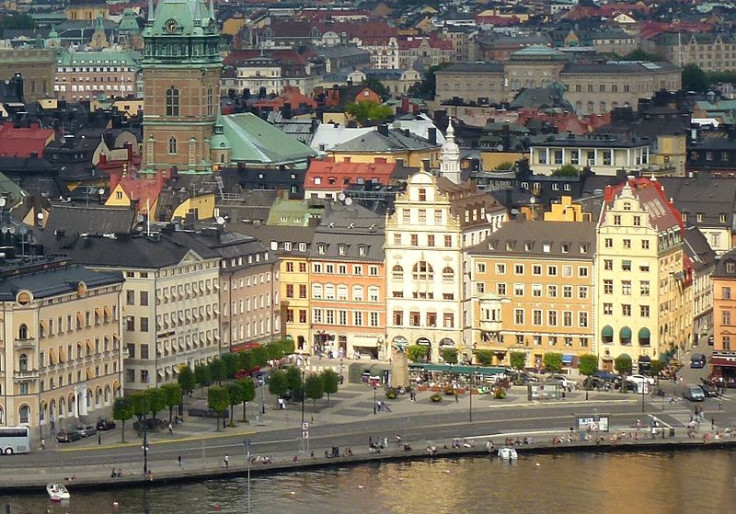Sweden's House Prices Have Tripled In Ten Years, But Is It Really A Bubble Waiting To Be Burst? Nobel Laureate Paul Krugman Thinks So

When a Nobel Prize-winning economist suggests that your country may be going through a housing bubble, you tend to take notice, but when the former deputy governor of your central bank says that there is no bubble, you have the right to be a little confused.
And that’s precisely what’s happening in Sweden right now. The Swedish media is awash with different theories as to what Sweden’s ever-rising house prices actually mean. The only thing that people have agreed on is low interest rates and lack of supply have forced prices up, which has driven private debt up to 170 percent of disposable income in 2013. The rest of the debate is wide open.
The loudest voices in that debate so far have been Economics Nobel Prize winner Paul Krugman and former Sveriges Riksbank (Sweden’s Central Bank) Deputy Governor Lars Svensson, who both studied at the Massachusetts Institute of Technology in the mid-'70s and were colleagues at Princeton. Krugman contends that Sweden is showing signs of a bubble because of the huge rise in housing prices over the last 13 years, where prices have risen by as much as 300 percent.
At a recent event in Stockholm, Krugman outlined his reasons why he thought Sweden might have issues. “Prices have gone up quite a lot and household debt is quite high. Those are normally the symptoms of a bubble.” However, Krugman does concedes that there might be special factors that mitigate what would normally constitute a bubble, but also says that countries that have claimed such mitigating factors in the past and were adamant that there was no bubble have in fact been wrong.
His comments were mirrored by another Economics Nobel laureate, Robert J Shiller, who in Jan 2012 predicted a Swedish housing bubble was coming. However, Svensson disagrees with Krugman.
“Paul Krugman has not had the opportunity to familiarize himself with Swedish housing,” said Svensson. “If you just look at prices and debt, one might think that it's a bubble. But the Riksbank's own survey from 2011 and the recent report of evidence both indicate that the rise is explained by fundamental factors.”
And Svensson might be right. Among the fundamental factors of the U.S. crash were speculation, mass construction, low savings and current account deficits. “In Sweden we have big savings, low construction and a large current account surplus,” said Svensson.
This is in contrast to the Swedish housing bubble of the early '90s, which resulted in a severe credit crunch and massive bank insolvency. If you’re not familiar with that crisis, it was very similar to the U.S. subprime collapse in 2007 and 2008 that cost the U.S. taxpayer upward of $700 billion. In relative terms, Sweden spent a similar portion of its gross domestic product as America when it bailed out its banks: about 4 percent, or around $18.3 billion in today’s money.
The final cost, some say, was around 2 percent of GDP, although officials believe it was closer to zero after the Swedish government sold back its stake in equity that it took from banks in exchange for help.
Sweden learned from this mistake and took action and reformed its banking sector, one of the main reasons the country remained unscathed from the global economic problems of the last few years.
Across the three Scandinavian countries, house prices have been a hot topic. Denmark was the only one to experience a housing bubble in recent years, when a property boom peaked in 2007 and burst a year later. In Norway housing prices have shown signs of bursting as they doubled over the last decade, but in Sweden, where apartment prices have tripled in 10 years and house prices doubled, there seems to a be an issue that needs addressing.
Unlike the pricing crash of 1991 and 1992, Sweden now appears impervious to such major financial meltdowns like other less well- regulated countries, which is exactly why so many people are confused about what the current surge of house prices means.
Just last week, Christian Clause, the CEO of Nordea Bank AB (STO:NDA), said that Swedes could withstand a 10 percent drop in house prices, given that savings in the country far exceed mortgage debts.
He even suggested that they could withstand more than 10 percent but said that a decline in excess of that figure would be improbable. And despite speculating on what Sweden could withstand, he still says that a collapse in Sweden and in neighboring country Norway is unlikely.
“We may at any time get an adjustment of the price level, which seems to be happening in Norway right now, and that may happen in Sweden as well of course,” said Clause. “That’s always the case in a market that goes up -- that sooner or later it will stabilize or go down. But in order for it to be a real risk, you need different drivers in place such as an economic downturn, unemployment and other things.”
While experts continue to quarrel whether or not Sweden has a housing bubble, house prices have begun to level and in December remained unchanged at record levels.
© Copyright IBTimes 2024. All rights reserved.






















